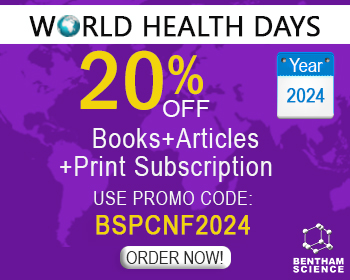Abstract
Abstract: Steroids are commonly employed in current clinical practice. The benefits of steroids in hormone replacement therapy, contraception and prevention or treatment of breast cancer are limited by their side effects arising from disorders in endometrial function. These side effects are complex and enclose bleeding problems and endometrial proliferation during hormone replacement therapy and antioestrogen treatment or menstrual disturbances during oral contraception. Numerous reports have identified gene targets influenced by steroids and have implicated these products as contributors to endometrial physiology or pathology. The expression of estrogen and progesterone receptors is regulated by steroids. The new estrogen receptor (ER) subtype ERb with different functional characteristics from ERa was recently described in endometrium. In addition, there is now increasing evidence that the functionally distinct progesterone receptor (PR) isoforms A and B are differentially expressed in this tissue. The relative proportions of these steroid receptors and their interaction determine the expression of specific genes upon steroidal stimulation. Steroids induce endometrial expression of various growth and angiogenic factors. Dysregulations of this steroid modulated expression is believed to be involved in the pathogenesis of many endometrial diseases. Irregular bleeding induced by steroidal contraception, for example, is thought to involve aberrant endometrial vascular development and expression of angiogenic growth factors. The antioestrogen tamoxifen induces growth factors like vascular endothelial growth factor and adrenomedullin which may be key mediators of endometrial neoplastic effects. This review describes recent advances regarding the mechanism of action of steroids on endometrium. The expression of oestrogen and progesterone receptors as well as steroid hormone dependent growth factors and angiogenic modulators are going to be discussed.
Keywords: steroids, endometrium, estrogen receptor ER, progesterone receptor PR, pathogenesis, expression, angiogenic growth factor, menopausal hormone replacement therapy HRT, peptide growth factor, progesterone receptor isoforms, epidermal growth factor EGF, Insulin like growth factor, transforming growth factor, TGF, placental protein 12 PP12, vascular endoothelial growth factor, platelet derived endothelial cell growth factor thymidine phosphorylase, adrenomedullin, tamoxifen

























